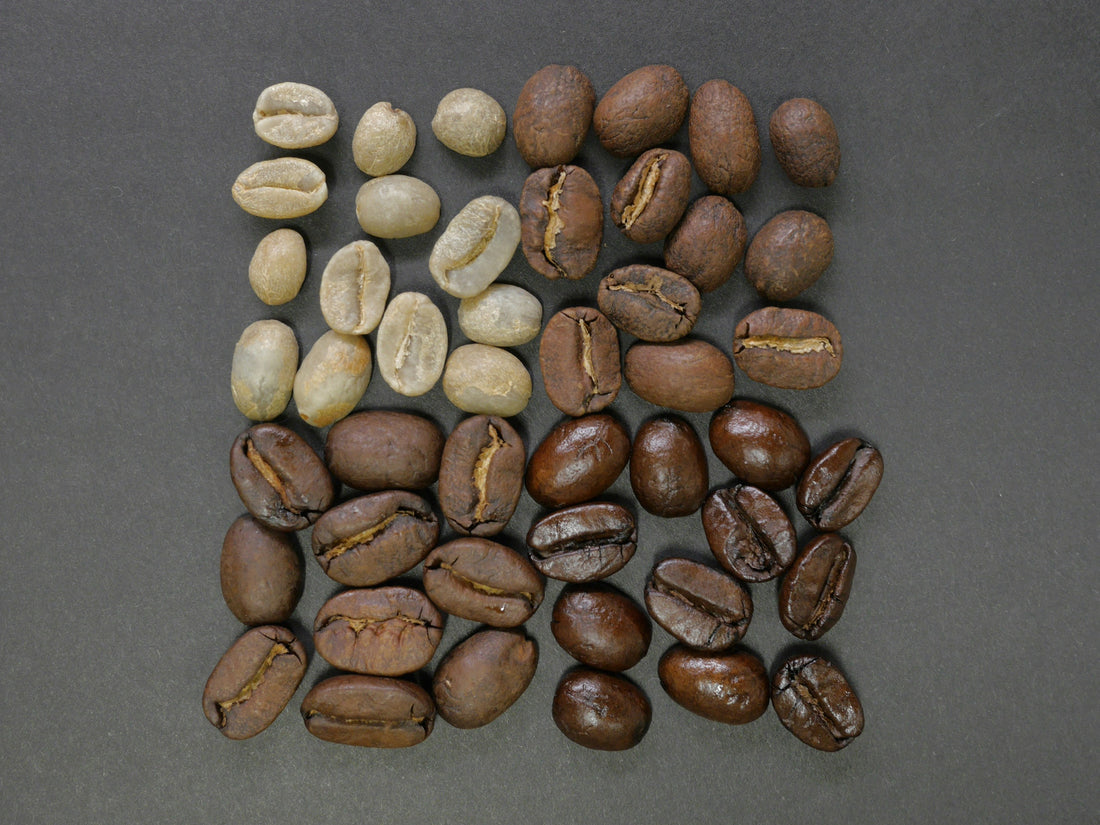
Understanding Coffee Roast Profiles: From Light to Dark
Share
Understanding Coffee Roast Profiles: From Light to Dark
Coffee roast profiles refer to the different stages of roasting that coffee beans undergo, and each stage directly influences the flavor, aroma, and acidity of the coffee. Roasting brings out unique characteristics in coffee, and different roast levels highlight various compounds and flavors within the beans. Whether you prefer bright and fruity notes or rich and smoky undertones, understanding the different roast profiles can help you choose the perfect coffee for your taste. Here's a breakdown of the main coffee roast profiles:
1. Light Roast
Color: Light brown with no oil on the surface.
Flavor Profile: Bright acidity, complex flavors, often fruity or floral notes. The original characteristics of the beans are most prominent.
Body: Light body, tea-like texture.
Roasting Temperature: Approximately 350°F to 400°F (177°C to 204°C), ending around the "first crack" (the first audible cracking sound during roasting).
Best Brewing Methods: Pour-over, Aeropress, drip coffee.
Characteristics: The light roast preserves the original bean flavors and regional qualities with minimal caramelization, making it ideal for high-quality single-origin coffees. This profile is perfect for highlighting unique and subtle flavors in coffee.
2. Medium Roast
Color: Medium brown with no to light oil on the surface.
Flavor Profile: Balanced acidity and sweetness, with notes of caramel, nuts, and chocolate. Retains some original flavors with added roast characteristics.
Body: Fuller body than light roast, smoother texture.
Roasting Temperature: Around 400°F to 430°F (204°C to 221°C), ending after the first crack but before the second crack.
Best Brewing Methods: Drip coffee, pour-over, French press, espresso.
Characteristics: Medium roasts offer a harmonious balance between the bean’s original flavors and the caramelization from roasting. This profile is popular for its versatility, making it ideal for a wide range of brewing methods and preferred for its approachable and balanced flavor.
3. Medium-Dark Roast
Color: Darker brown with visible oils beginning to emerge on the bean surface.
Flavor Profile: Rich, bold flavors with deep caramel, chocolate, and sometimes spicy or smoky undertones.
Body: Full-bodied with a slightly thicker texture.
Roasting Temperature: Approximately 430°F to 450°F (221°C to 232°C), typically just before or at the start of the "second crack."
Best Brewing Methods: French press, espresso, moka pot.
Characteristics: Medium-dark roasts are known for their rich, full-bodied flavor with reduced acidity. The original bean flavors start to give way to the roasted notes, creating a robust and well-rounded taste. This profile is great for those who enjoy bold flavors with a slightly smoky or spicy twist.
4. Dark Roast
Color: Dark brown, almost black, with a glossy surface due to the release of oils.
Flavor Profile: Low acidity with pronounced roast flavors, including bittersweet chocolate, smoky, and sometimes charred or burnt notes.
Body: Very full-bodied, rich, and heavy.
Roasting Temperature: Approximately 450°F to 480°F (232°C to 249°C), usually well into the second crack or beyond.
Best Brewing Methods: Espresso, French press, drip coffee, especially suited for drinks with milk like lattes or cappuccinos.
Characteristics: Dark roasts emphasize the flavors created during roasting, rather than the origin of the bean, delivering a bold and intense flavor with reduced acidity. This roast is perfect for those who enjoy a strong, rich cup of coffee, with a smoky or bittersweet finish.
Specialty Coffee Roast Terms
In addition to the main roast categories, there are several terms used to describe specific roast levels, each with its own unique flavor profile:
- Cinnamon Roast: A very light roast, just before the first crack, with high acidity and distinct brightness.
- City Roast: A standard light-medium roast, often used for single-origin coffees, which highlight the bean's origin flavors.
- Full City Roast: A medium-dark roast that approaches the second crack, offering a balanced combination of sweetness and richness.
- Vienna Roast: A light-dark roast with significant oil on the surface and a bittersweet flavor.
- French Roast: A very dark roast known for its smoky flavor, bordering on burnt.
- Italian Roast: The darkest roast, often used for espresso, with intense bitterness and almost black beans.
How to Choose the Right Coffee Roast Profile
Choosing the best coffee roast is largely a matter of personal preference. However, here’s a quick guide to help you select the ideal roast for your taste:
- Light or Medium Roasts: If you love bright, fruity flavors with complex acidity, go for light or medium roasts. These beans retain more of the original flavors and highlight their unique characteristics.
- Medium or Medium-Dark Roasts: If you enjoy a balance of caramel, chocolate, and nutty flavors, a medium or medium-dark roast is your best bet. These roasts offer fuller bodies and a smooth, well-rounded taste.
- Dark Roasts: For those who prefer a bold, robust coffee with smoky or bittersweet notes, dark roasts offer an intense experience. These are ideal for those who like their coffee strong and rich, especially with milk-based drinks.
Conclusion: Explore the Full Spectrum of Coffee Roasts
Each coffee roast profile has its own charm and offers a wide range of flavors and textures. By experimenting with different roasts, you can discover new flavors, from bright and floral notes in light roasts to rich, smoky undertones in dark roasts. Whether you're brewing a pour-over, an espresso, or a French press, selecting the right roast will help you create the perfect cup tailored to your preferences.
